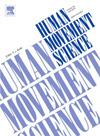使用神经格兰杰因果关系作为可解释的人工智能来理解两个玩家之间的全身人际动态
IF 1.9
3区 心理学
Q4 NEUROSCIENCES
引用次数: 0
摘要
了解人类复杂的全身人际协调行为的动力学是行为科学的一个重要课题。然而,由于使用传统技术分析多种身体成分之间复杂因果关系的挑战,这一领域仍未得到充分探索。为了解决这个问题,本研究提出了一个新的分析框架,试图利用神经格兰杰因果关系(NGC)作为可解释的人工智能(XAI)来理解个体球员每个关节运动背后的潜在因果结构。在NGC分析中,因果关系被定义为机器学习模型的第一层权重参数的大小,该模型被训练用于预测特定时间序列变量的未来状态。为了验证该方法的实用性,我们对16对专业棒球投手和击球手进行了实验,生成了27个关节合力速度(13个投手和14个击球手关节)的输入数据集,并将其用于模型训练。结果表明,个体身体成分之间存在显著的因果关系,如“击球手的手与投手的投掷臂有因果关系”。虽然击球手对投手身体的因果关系显著低于投手对击球手身体的因果关系,但与击球手的表现结果呈显著相关(R2 = 0.69)。这些结果表明,NGC分析在理解全身人际协调动力学方面是有效的,更广泛地说,XAI技术是一种从不同于传统技术的角度分析复杂人类行为的新方法。本文章由计算机程序翻译,如有差异,请以英文原文为准。
Understanding whole-body inter-personal dynamics between two players using neural granger causality as the explainable artificial intelligence
Understanding the dynamics of complex, whole-body interpersonal coordination behavior in humans is an important subject in behavioral science. However, due to the challenges of analyzing complex causal relationships among multiple body components with conventional techniques, this area remains underexplored. To address this issue, this study proposes a new analytical framework that attempts to understand the underlying causal structures behind each joint movement of individual players using neural Granger causality (NGC) as the explainable artificial intelligence (XAI). In the NGC analysis, causal relationships were defined as the size of the weight parameters of the first layer of a machine-learning model trained to predict the future state of a specific time-series variable. To verify this approach practically, we conducted an experiment with 16 pairs of expert baseball pitchers and batters, and input datasets with 27 joint resultant velocity (13 pitchers' and 14 batters' joints) were generated and used for model training. The results revealed that significant causal relations exist among intra- and inter-individual body components, such as “the batter's hands have a causal effect from pitcher's throwing arm.” Although the causality from the batters to the pitcher's body is significantly lower than that from the pitchers to the batter's body, it exhibits a significant correlation with the performance outcomes of batters (R2 = 0.69). These results suggest the effectiveness of the NGC analysis for understanding whole-body inter-personal coordination dynamics and, more broadly, the XAI technique as a new approach for analyzing complex human behavior from a perspective different from conventional techniques.
求助全文
通过发布文献求助,成功后即可免费获取论文全文。
去求助
来源期刊

Human Movement Science
医学-神经科学
CiteScore
3.80
自引率
4.80%
发文量
89
审稿时长
42 days
期刊介绍:
Human Movement Science provides a medium for publishing disciplinary and multidisciplinary studies on human movement. It brings together psychological, biomechanical and neurophysiological research on the control, organization and learning of human movement, including the perceptual support of movement. The overarching goal of the journal is to publish articles that help advance theoretical understanding of the control and organization of human movement, as well as changes therein as a function of development, learning and rehabilitation. The nature of the research reported may vary from fundamental theoretical or empirical studies to more applied studies in the fields of, for example, sport, dance and rehabilitation with the proviso that all studies have a distinct theoretical bearing. Also, reviews and meta-studies advancing the understanding of human movement are welcome.
These aims and scope imply that purely descriptive studies are not acceptable, while methodological articles are only acceptable if the methodology in question opens up new vistas in understanding the control and organization of human movement. The same holds for articles on exercise physiology, which in general are not supported, unless they speak to the control and organization of human movement. In general, it is required that the theoretical message of articles published in Human Movement Science is, to a certain extent, innovative and not dismissible as just "more of the same."
 求助内容:
求助内容: 应助结果提醒方式:
应助结果提醒方式:


